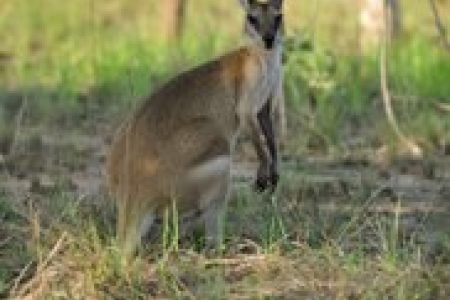NT wallaby numbers in spotlight
A Charles Darwin University researcher is calling on pastoralists to assist with an investigation into Agile Wallaby numbers on properties in the Northern Territory to aid with future management.
Wallaby populations in the Top End have been an issue since the 1960s with pastoralists in some areas labelling the protected species a pest, costing the industry millions of dollars a year.
Research Institute for the Environment and Livelihoods research fellow Dr Miguel Bedoya-Perez is working with stakeholders on Stage 1 of a proposed three stage project over the next five years.
“Stage 1 is the scoping exercise,” Dr Bedoya-Perez said. “We are hoping to talk to all stakeholders involved, particularly pastoralists to gather information about the issue and also conduct surveys on properties to assess current wallaby numbers.”
As part of the project Dr Bedoya-Perez has conducted monthly surveys of wallabies on pastoral leases at Mataranka, the Douglas Daly and the Victoria River District.
“In some agricultural areas we have estimated wallaby numbers are more than double their natural density,” he said.
“During the late 1980s early 1990s numbers of Agile Wallabies in the NT varied between eight individuals per square km in Adelaide River, up to 185 individuals per square km in Berry Springs.
“During our surveys we are finding an average of more than 430 wallabies per square km.”
He said there were a number of factors that could be attributed to the increase in numbers such as continued access to water throughout the year and improved pastures.
“We hope to determine current wallaby numbers to develop a population growth model and estimate wallaby carrying-capacity of farms affected by wallabies,” he said. “The next stage would be to work towards developing a management plan.”
Dr Bedoya-Perez said the success of the project would rely heavily on the support of stakeholders and he wanted to talk to pastoralists in Mataranka, the Douglas Daly and the Victoria River District.
Dr Miguel Bedoya-Perez, originally from Venezuela in South America, completed his honours thesis in 2007, on the behavioural ecology and reproduction of Capybaras, the largest rodent species in the world. In 2013 he gained his PhD from the University of Sydney on the foraging ecology of swamp wallabies.
This project is funded by Meat and Livestock Australia.
